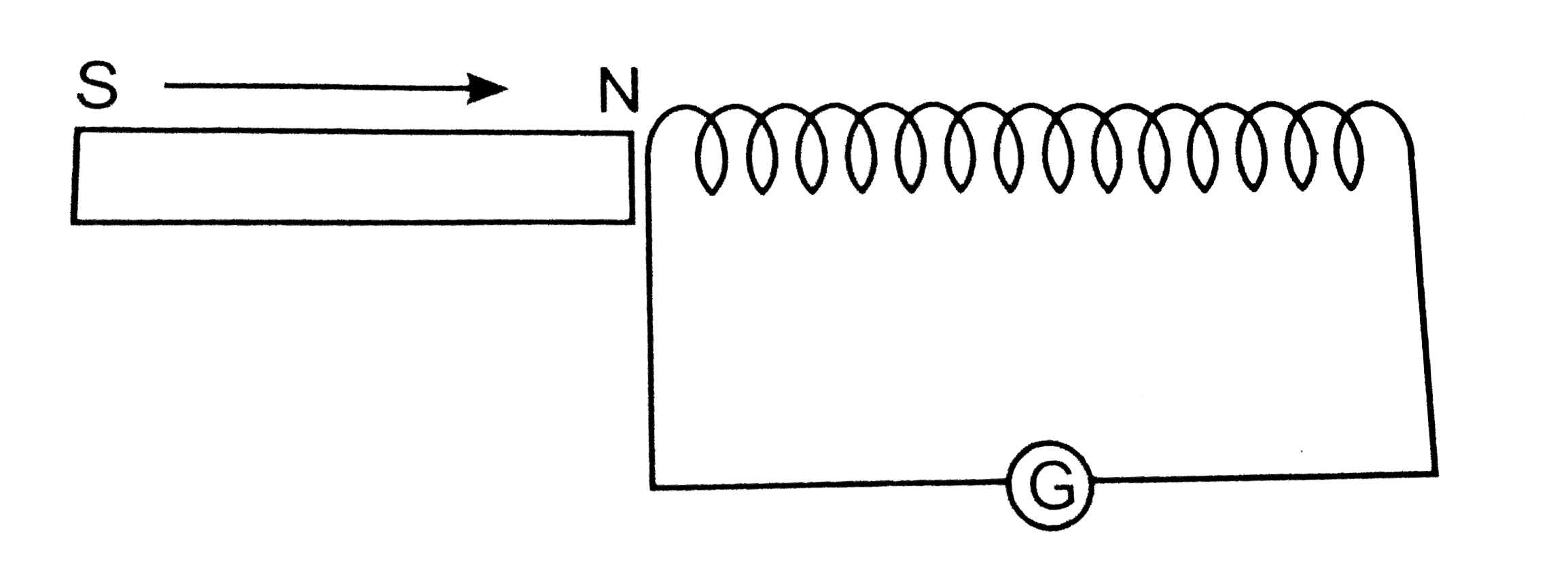In electromagnetic induction, the induced charge in a coil is independent of
change in the flux
time taken to change the flux
resistance in the circuit
None of the above
The correct Answer is:B
Induced emf, e=−dϕdt
But, e=iRandi=dqdt
∴ dqdtR=−dϕdtordq=dϕR
So, induced charge in a coil is independent of time taken to charge the flux.
Topper's Solved these Questions
- BOOK - DC PANDEY ENGLISHCHAPTER - ELECTROMAGNETIC INDUCTIONEXERCISE - Medical entrance special format questions17videos
ELECTROMAGNETIC INDUCTION
- BOOK - DC PANDEY ENGLISHCHAPTER - ELECTROMAGNETIC INDUCTIONEXERCISE - Match the columns5videos
ELECTROMAGNETIC INDUCTION
- BOOK - DC PANDEY ENGLISHCHAPTER - ELECTROMAGNETIC INDUCTIONEXERCISE - Check point60videos
ELECTROMAGNETIC INDUCTION
- BOOK - DC PANDEY ENGLISHCHAPTER - CURRENT ELECTRICITYEXERCISE - Medical entrances gallery97videos
CURRENT ELECTRICITY
- BOOK - DC PANDEY ENGLISHCHAPTER - ELECTROMAGNETIC WAVESEXERCISE - Sec C22videos
ELECTROMAGNETIC WAVES
Similar Questions
Electromagnetic induction is not used in
View SolutionThe induced e.m.f. in a coil does not depend on
View SolutionInduced Electromagnetic Field
View SolutionThe phenomena of electromagnetic induction is:
(a) the process of charging a body.
(b) the process of generating magnetic field due to a current passing through a coil.
(c) producing induced current in a coil due to relative motion between a magnet and the coil.
(d) the process of rotating a coil of an electric motor.View SolutionElectromagnetic brakes work on the principle of electromagnetic induction. If a metallic disc or a coil is rotating in a uniform magnetic field, it will experience a torque due to induced currents set up in the disc. According to Lenz's law, induced current is in a direction so as to oppose the rotation. Hence a retarding torque is produced. The rotating wheel of a vehicle is connected to a coil placed in a uniform emf is used to charge a battery. Thus kinetic enery of wheel is stored as chemical energy. The drawback of electromagnetic brake is that induced current or retarding torque is directly proportional to speed of rotation. The speed, therefore, decays exponentially and vehicle will take a long time to stop. Thus, mechanical brakes are used simultaneously.
The working of electromagnetic brakes does not involveView SolutionElectromagnetic brakes work on the principle of electromagnetic induction. If a metallic disc or a coil is rotating in a uniform magnetic field, it will experience a torque due to induced currents set up in the disc. According to Lenz's law, induced current is in a direction so as to oppose the rotation. Hence a retarding torque is produced. The rotating wheel of a vehicle is connected to a coil placed in a uniform emf is used to charge a battery. Thus kinetic enery of wheel is stored as chemical energy. The drawback of electromagnetic brake is that induced current or retarding torque is directly proportional to speed of rotation. The speed, therefore, decays exponentially and vehicle will take a long time to stop. Thus, mechanical brakes are used simultaneously.
The advantage of electromagnetic brakes is thatView SolutionElectromagnetic brakes work on the principle of electromagnetic induction. If a metallic disc or a coil is rotating in a uniform magnetic field, it will experience a torque due to induced currents set up in the disc. According to Lenz's law, induced current is in a direction so as to oppose the rotation. Hence a retarding torque is produced. The rotating wheel of a vehicle is connected to a coil placed in a uniform emf is used to charge a battery. Thus kinetic enery of wheel is stored as chemical energy. The drawback of electromagnetic brake is that induced current or retarding torque is directly proportional to speed of rotation. The speed, therefore, decays exponentially and vehicle will take a long time to stop. Thus, mechanical brakes are used simultaneously.
The main disadvantage of electromagnetic brakes is thatView SolutionThe law of electromagnetic induction have been used in the construction of
View SolutionIf the instantaneous magnetic flux and induced emf produced in a coil is ϕ and E respectively, then a according to Faraday's law of electromagetic induction
View SolutionAs shown in the figure, a magnetic is moved with a a fast speed towards a coil at rest. Due to this, induced electromotive force, induced charge in the coil are E, I and Q respectively. If the speed of magnetic is doubled, the incorrect statement is
 View Solution
View Solution

